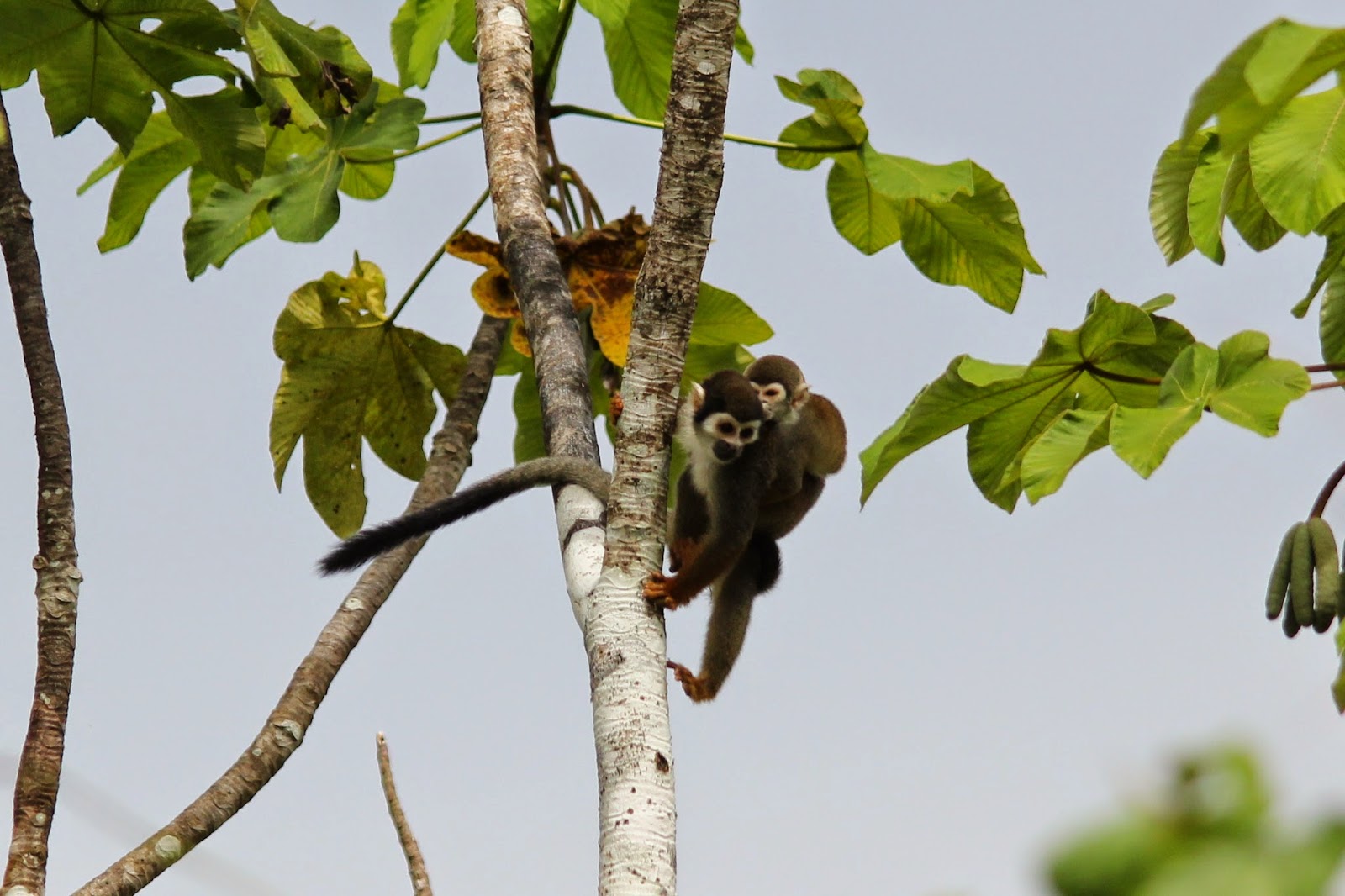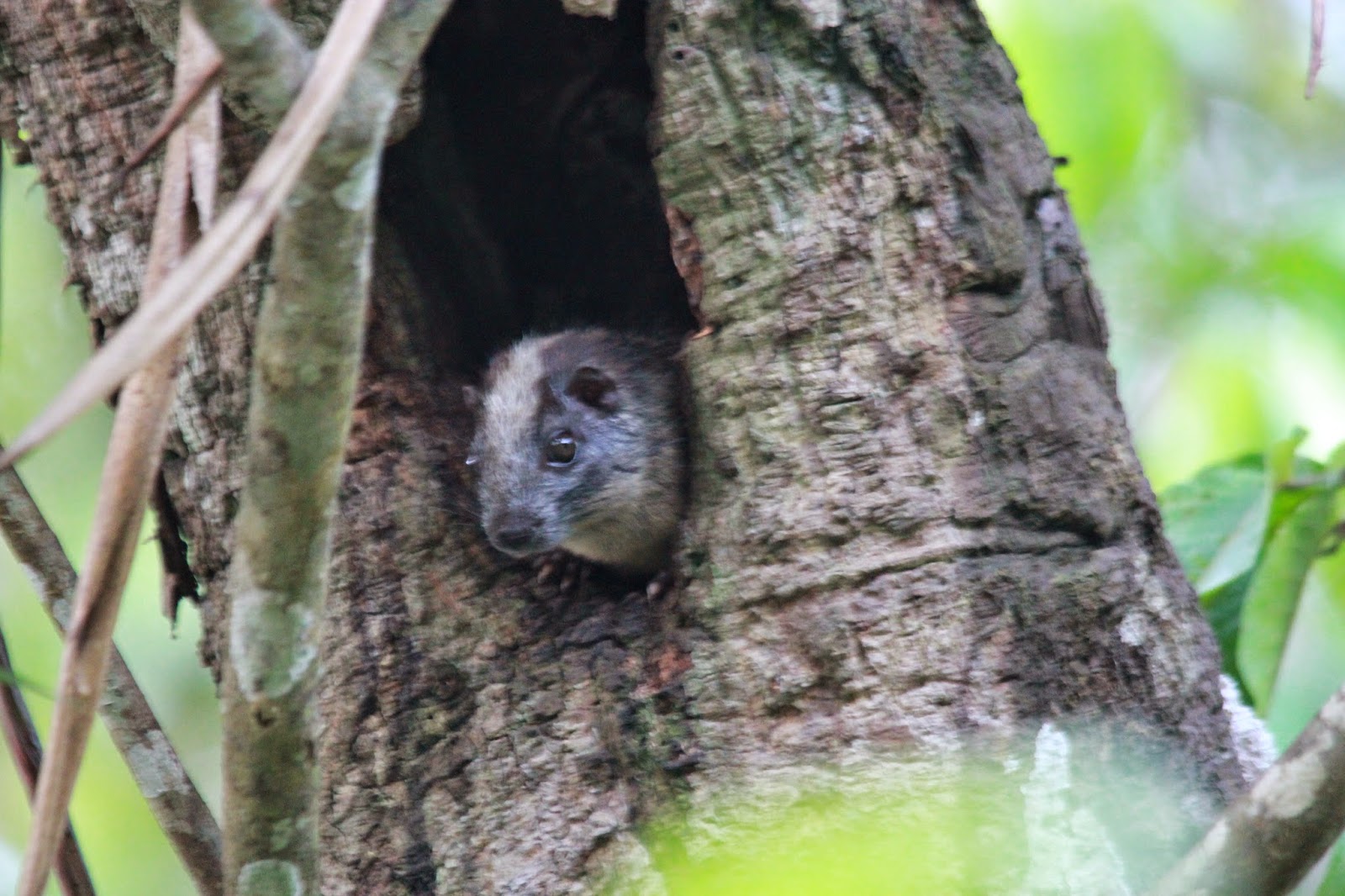I was on top deck just after 4 a.m. Wide-eyed. Awaiting dawn; so I could see the mighty Amazon in daylight!
The captain periodically turned on one or both of the boat’s front spot lights as visual aids for navigating in the dark. GPS is not used here because water (delivered from the Andes this [wet] time of year) raises the Amazon River’s height an average of 40 feet (4 stories). The river can’t hold 40 feet of water; so the 4,000 mile long river widens and leaks onto and over vast amounts of land. I think I heard that 90% of land here is flatland.
Segundo (one of our two Naturalist Guides) joined me on deck around 5am - and IDed many birds. I plan to post a complete list of my week’s birds sightings on ebirds.com; but the first five this first morning were:
- Large Bill Tern
- Muscovy (Duck), White
- White Winged Parakeets
- Lesser Yellow Headed Vulture
- Yellow Headed Caracara
Sunrise followed around 6am.
 |
| Great Black Hawk |
 |
| Cream Colored Woodpecker |
 |
White Throated Toucan
(Later in the week we saw a second species: Channel Billed Toucan) |
As we navigated on water through tree tops of former dry forests, our skiff went under many low hanging branches. When Logan (13 year old from Suffolk, VA) touched his fingertips to the leaves, our guide warned us of various species of biting ants on many trees - particularly the tree species Logan happened to touch. Saw several kinds of ant nests (2-8+ feet long) suspended from trees today and each day of the trip.
At (Easter Sunday) lunch, our guide introduced us to our captain. Our crew made catfish in a lime butter sauce and beef tenderloin stir fry with beans, rice and yuca. There was also salad, a maize paste, slices of huge kernals of cold corn on the cob and mushroom/heart of palm ceviche. As we finished lunch (and as if on queue), BOTH species of dolphins (grey and pink) popped in and out of our boat's wake. Side note: They have little/no eye sight and navigate via echolocation.
Swimmers
As we continue to expand our minds about each annual wet season flooding the land in up to 40 feet of water, our guide explains that everything in the jungle swims - big cats, peccary, anteaters - even sloths.
Machete
Towards the end of the skiff ride, the water’s… ‘path’ ended. Our guide used a machete to carve a waterway through the jungle’s trees and vines - back to the larger river where are big boat awaited.
And just when the equatorial heat was initiating us, our guide pulled out a cooler and gifted each of us with a frozen rolled washcloth. Heaven on earth!
As sunset approached, the skiffs took a ‘shortcut’ - that we’ve since laughed about a lot. The locals are used to various seasonal routes (over former land) depending on the River’s height. Our infamous ‘shortcut’ took us over/through dense vegetation - which seemed to clog both skiffs’ motors - more than once. The sun setting happens quickly here; so it also felt a bit like Beat the Clock, trying to make it back to the big boat before dark. Later I heard that in the middle of all that, our guide Segundo was stung by a wasp!
Some have happy hour before dinner. Here on The river, we have ‘harpy hour.’ (The world’s largest bird of prey - the Harpy Eagle - lives here). Also, seven members of the crew played and sang lively peruvian music.
Dinner was pork chops and fish. Dessert was two birthday day cakes - for Betty Lou from New Mexico and Martin, the former surgeon gone administrator from Cape Cod, MA. Martin also lived in Norfolk for 10 years. (Neither guest had mentioned their birthdays. This was exemplary of International Expedition’s thoughtful attention to details and service.)
After dinner, expedition leader Rezno briefed us on tomorrow’s agenda, what to bring and how to dress. We then moved to the top deck’s lecture room where Renzo provided a short lecture on the ecological facts of the Amazon.
















































Very, very nice recap. I vaguely knew that a lot of water came off the Andes, but just never realized how much it was. It sounds like you got a lot of education from Renzo, Segundo and the rest of the crew - what an amazing experience.
ReplyDeleteYour old uncle is right! Great recap! The education you are receiving cannot be gotten in a bricks and mortar classroom. The mention of the biting ants reminded me of Roosevelt's trip and some of the deadly critters they encountered. Love the cream colored wood pecker, a dear little fellow.
ReplyDeleteAnd. I STILL think you should sell some of your photos. You have a gift.